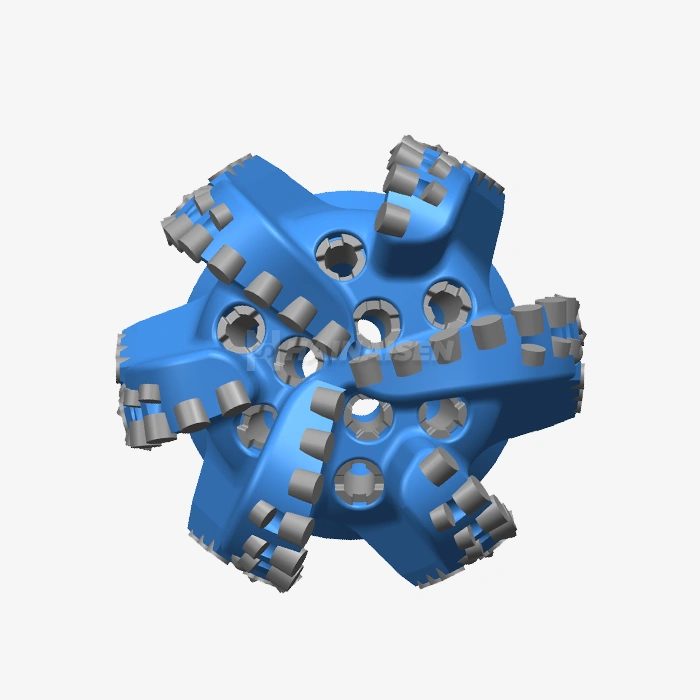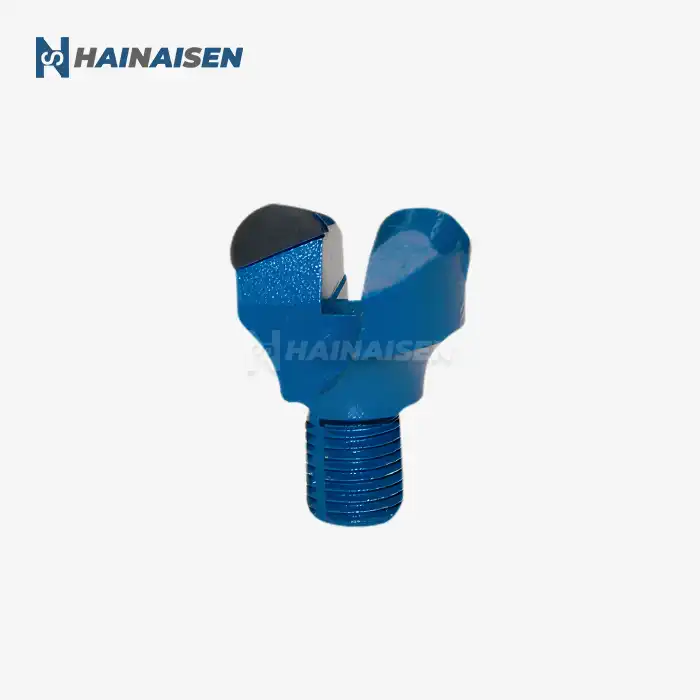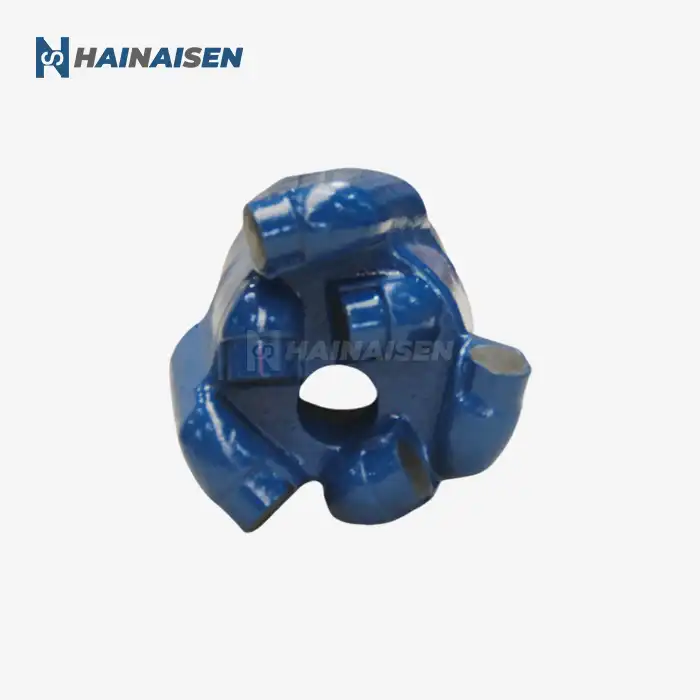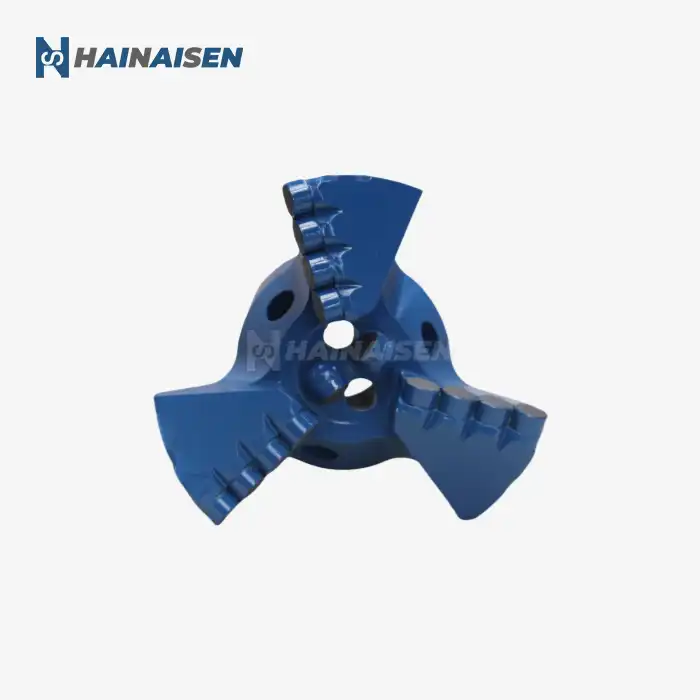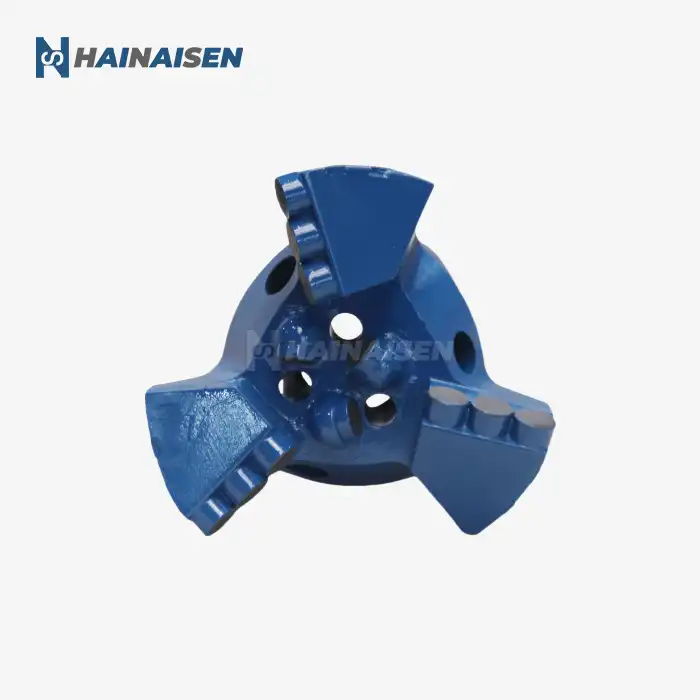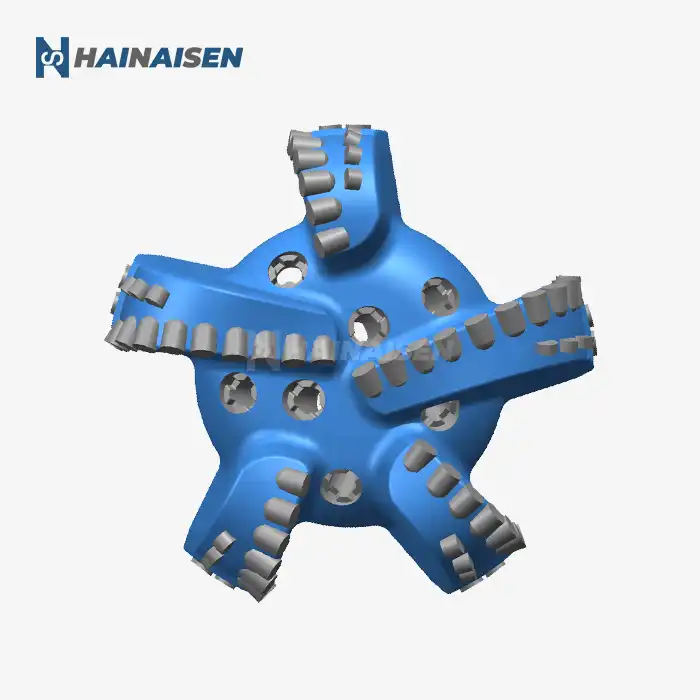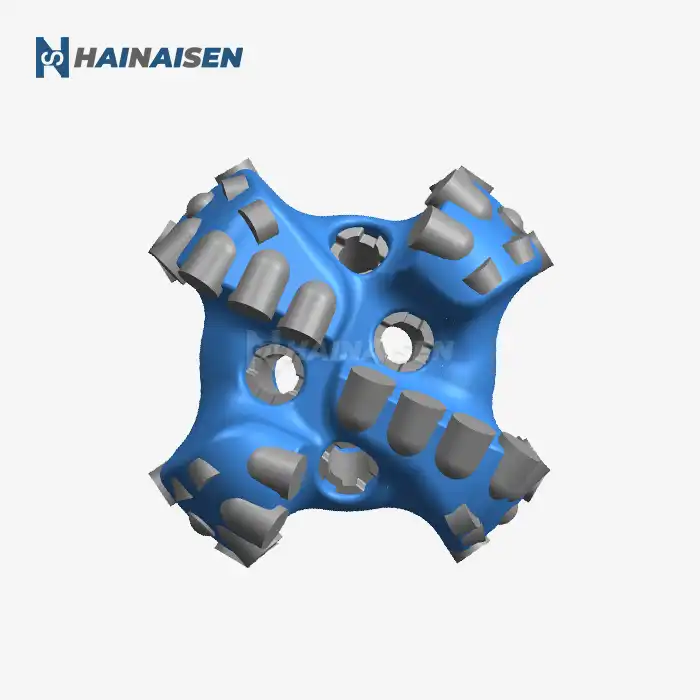Evolution of Cutting Elements: Diamond to Polycrystalline
The journey of cutting element technology in drill bits has been nothing short of revolutionary. The transition from natural diamond cutters to polycrystalline diamond compact (PDC) cutters marks a significant milestone in drilling technology. This evolution has drastically improved the performance and durability of PDC rock drill bits, particularly in challenging drilling conditions.
Natural Diamond to Synthetic Diamond
Initially, natural diamonds were used as cutting elements in drill bits. While effective, they had limitations in terms of availability, consistency, and cost. The advent of synthetic diamonds addressed these issues, providing a more reliable and economical alternative. Synthetic diamonds offered improved uniformity in quality and could be produced in larger quantities, making them ideal for industrial applications like drilling.
Introduction of Polycrystalline Diamond Compact (PDC)
The development of PDC technology marked a quantum leap in cutting element design. PDC cutters consist of a layer of synthetic diamond particles bonded to a tungsten carbide substrate under high pressure and temperature. This unique composition offers several advantages:
- Enhanced durability and wear resistance
- Improved heat dissipation
- Better impact resistance
- Increased cutting efficiency
PDC cutters have significantly outperformed their predecessors in various drilling applications, particularly in oil and gas exploration, where they have become the standard for many operations.
Advancements in PDC Cutter Design
Continuous research and development have led to further improvements in PDC cutter design:
- Optimized cutter geometry for improved cutting action
- Enhanced diamond layer thickness for prolonged cutter life
- Development of specialized PDC grades for specific formation types
- Integration of thermal-stable polycrystalline (TSP) diamond for high-temperature applications
These advancements have expanded the capabilities of PDC drill bits, allowing them to perform efficiently in a wider range of drilling conditions, from soft sedimentary rocks to abrasive and hard formations.

Optimizing Fluid Dynamics for Enhanced Drilling Efficiency
The optimization of fluid dynamics plays a crucial role in the performance of PDC rock drill bits. Proper fluid management not only aids in cutting removal but also contributes significantly to bit cooling and overall drilling efficiency. Recent technological advancements have focused on refining hydraulic designs to maximize the benefits of fluid dynamics in drilling operations.
Advanced Nozzle Configurations
Modern PDC bits feature sophisticated nozzle configurations designed to optimize fluid flow across the bit face. These advanced designs include:
- Variable nozzle sizes and placements for targeted cleaning
- Angled nozzles to create high-velocity fluid streams
- Specialized nozzle materials resistant to erosion
These innovations ensure efficient cuttings evacuation, prevent bit balling, and maintain optimal bit-to-formation contact, all of which contribute to improved drilling performance.
Computational Fluid Dynamics (CFD) Analysis
The application of CFD analysis in PDC drill bit design has revolutionized fluid optimization. This powerful tool allows engineers to:
- Simulate fluid behavior under various drilling conditions
- Identify areas of potential hydraulic inefficiency
- Optimize junk slot area and blade design for improved fluid flow
- Predict and mitigate issues related to cuttings accumulation
By leveraging CFD analysis, manufacturers can create bit designs that maximize hydraulic efficiency, leading to faster penetration rates and reduced drilling costs.
Integration of Flow Diverters and Channels
Innovative PDC bit designs now incorporate flow diverters and strategically placed channels to enhance fluid dynamics. These features:
- Direct drilling fluid to critical areas of the bit face
- Improve cuttings removal from the bottom of the hole
- Enhance cooling of PDC cutters during operation
- Reduce hydraulic erosion of the bit body
The integration of these hydraulic elements has significantly improved the overall performance and longevity of PDC rock drill bits, particularly in challenging drilling environments.

Impact of 3D Modeling on PDC Bit Performance
The advent of advanced 3D modeling techniques has revolutionized the design and performance optimization of PDC rock drill bits. This technology allows engineers to create highly accurate virtual prototypes, simulate drilling conditions, and refine bit designs before physical production. The impact of 3D modeling on PDC bit performance has been substantial, leading to more efficient and durable drill bits.
Precise Cutter Placement and Orientation
3D modeling enables engineers to optimize the placement and orientation of PDC cutters with unprecedented precision. This level of detail in design allows for:
- Balanced cutter load distribution across the bit face
- Optimized cutter-to-formation engagement angles
- Improved bit stability and reduced vibration
- Enhanced wear resistance and bit life
By fine-tuning these parameters, manufacturers can create PDC bits tailored for specific formation types and drilling conditions, resulting in superior performance and longevity.
Virtual Drilling Simulations
Advanced 3D modeling software allows for the simulation of various drilling scenarios, providing valuable insights into bit behavior under different conditions. These simulations help in:
- Predicting bit performance in specific formations
- Identifying potential design weaknesses before field testing
- Optimizing cutting structures for improved rate of penetration (ROP)
- Analyzing the impact of different operating parameters on bit performance
This virtual testing capability significantly reduces development time and costs while ensuring that the final product meets or exceeds performance expectations.
Iterative Design Optimization
3D modeling facilitates rapid iteration in the design process, allowing engineers to quickly test and refine multiple design concepts. This iterative approach enables:
- Continuous improvement of bit designs based on simulation results
- Exploration of innovative geometries and cutting structures
- Rapid adaptation to evolving drilling technologies and techniques
- Customization of bits for specific customer requirements
The ability to rapidly prototype and test designs virtually has accelerated the pace of innovation in PDC bit technology, leading to more advanced and efficient drilling solutions.
Conclusion
The technological advances in PDC rock drill bit design have significantly enhanced drilling efficiency and performance across various applications. From the evolution of cutting elements to the optimization of fluid dynamics and the impact of 3D modeling, these innovations have revolutionized the drilling industry. As a result, operators in oil and gas exploration, mining, and construction can now achieve faster penetration rates, improved bit durability, and reduced overall drilling costs.
For companies seeking to leverage these cutting-edge technologies in their drilling operations, Shaanxi Hainaisen Petroleum Technology Co., Ltd. offers state-of-the-art PDC drill bits designed to meet the most demanding drilling challenges. Our advanced manufacturing facility and dedicated R&D team ensure that we stay at the forefront of drill bit technology, providing customized solutions for various drilling environments.
To explore how our innovative PDC rock drill bits can optimize your drilling operations and improve your bottom line, please contact us at hainaisen@hnsdrillbit.com. Our team of experts is ready to assist you in selecting the ideal drill bit solution for your specific needs, ensuring maximum efficiency and performance in your drilling projects.
References
1. Smith, J.R. (2021). "Advancements in PDC Cutter Technology for Improved Drilling Efficiency." Journal of Petroleum Technology, 73(5), 62-68.
2. Johnson, A.K., et al. (2020). "Computational Fluid Dynamics in PDC Bit Design: A Review." SPE Drilling & Completion, 35(3), 301-315.
3. Zhang, L., & Chen, X. (2019). "3D Modeling and Simulation Techniques in Rock Drill Bit Design." International Journal of Rock Mechanics and Mining Sciences, 124, 104-118.
4. Brown, T.C., et al. (2022). "Evolution of Cutting Elements in Drill Bit Technology: From Natural Diamond to Advanced PDC." Drilling Contractor, 78(2), 42-50.
5. Lee, S.H., & Park, J.Y. (2020). "Optimizing Hydraulics in PDC Bit Design for Enhanced Drilling Performance." Journal of Petroleum Science and Engineering, 185, 106633.
6. Thompson, R.L. (2021). "Impact of Advanced Modeling Techniques on PDC Bit Performance in Hard Rock Formations." SPE/IADC Drilling Conference Proceedings, SPE-204085-MS.



